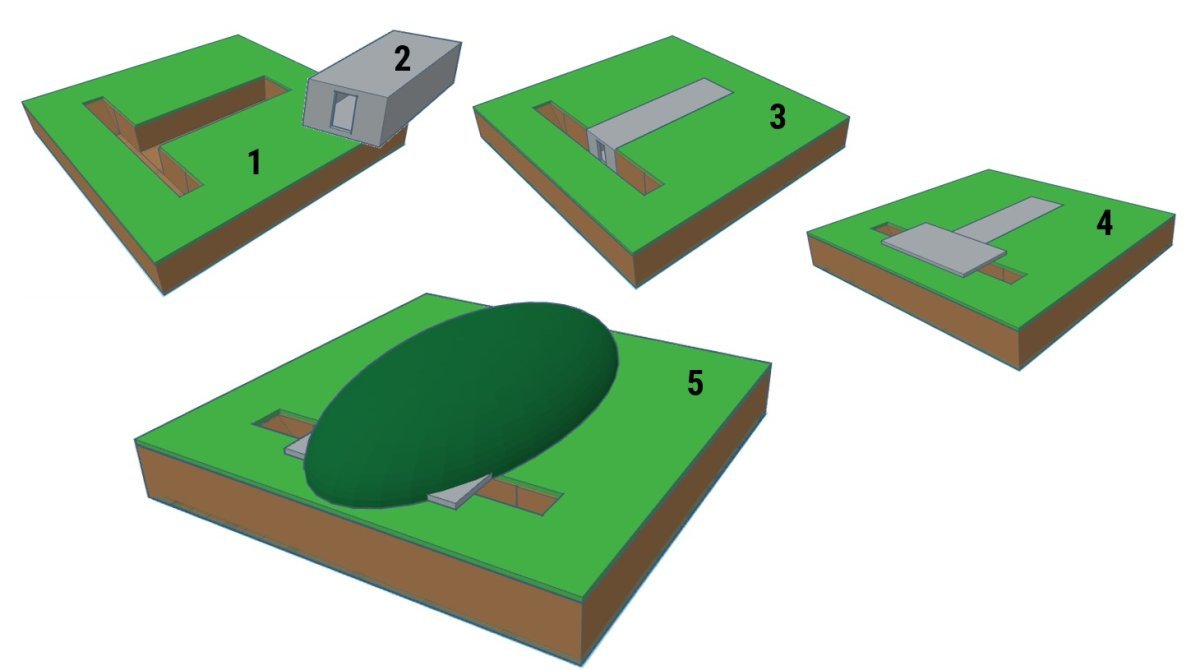Russia’s Baltic neighbors are beefing up their border defenses by building a series of bunkers along their Russian and Belarusian borders.
The Estonian Defense Ministry said in a release on Friday that Estonia and the other Baltic countries—Latvia and Lithuania—would soon begin “building anti-mobility defensive installations on the borders with Russia and Belarus”
Hanno Pevkur, Arvydas Anušauskas and Andris Sprūds, defense ministers of Estonia, Lithuania and Latvia, respectively, on Friday in Riga signed an agreement to build the bunkers “in the coming years.”
The move comes as tensions simmer between NATO, Russia and Belarus amid the ongoing war in Ukraine. All three Baltic nations are NATO member states, while Belarus has strong ties to Russia and has recently threatened the strategic alliance.
Sean Gallup
“To build the anti-mobility defensive installations is a carefully considered and thought-out project, the need of which stems from the current security situation,” said Pevkur.
“Russia’s war in Ukraine has shown that, in addition to equipment, ammunition, and manpower, physical defensive installations on the border are also needed to defend Estonia from the first meter,” he added.
Pevkur went on to say that the installations were intended to prevent a conflict and would allow the military to be “ready for various developments more promptly” if “the slightest risk emerged.”
Newsweek reached out for comment to the Russian Ministry of Defense and the Embassy of Belarus in Washington, D.C., via email on Friday.
The Estonian Defense Ministry said that the installations would consist of “a network of bunkers, support points and distribution lines” but “no explosives, cutting wires or other obstacles” during peacetime.
The ministry also said that the Baltic countries had signed a “letter of intent” to jointly operate U.S.-made HIMARS multiple rocket launcher systems “in both peace and wartime” and conduct “NATO Air Policing” in Latvia.
A sketch of what appears to be a series of rectangular underground bunkers was included alongside the announcement.

Estonian Ministry of Defense/Estonian Ministry of Defense
The cost of the project is estimated at around €60 million, or about $65.3 million, with an Estonian component consisting of approximately 600 bunkers, according to Estonian Public Broadcasting.
The Estonian military said that the project was inspired by the 2022 NATO summit in Madrid, Spain, where NATO leaders “emphasized that Allies must be ready to defend the territory from the first meter and new regional defense plans must be developed.”
Although Russian President Vladimir Putin has said that he has “no reason” to “fight with NATO countries,” Moscow’s relationship with the alliance, and the Baltic states in particular, has been extremely fragile since invading Ukraine.
U.S.-based think tank the Institute for the Study of War (ISW) said earlier this week that Putin’s recent rhetoric on Russia’s Baltic neighbors was intended “to set information conditions” for “future escalations” that could weaken NATO.
Belarus announced earlier this week that it had adopted a new military doctrine allowing for the use of nuclear weapons supplied by Russia. Belarusian Defense Minister Viktor Khrenin warned NATO on Friday that Belarusians are “ready to protect their country with all forces and means.”
Uncommon Knowledge
Newsweek is committed to challenging conventional wisdom and finding connections in the search for common ground.
Newsweek is committed to challenging conventional wisdom and finding connections in the search for common ground.


